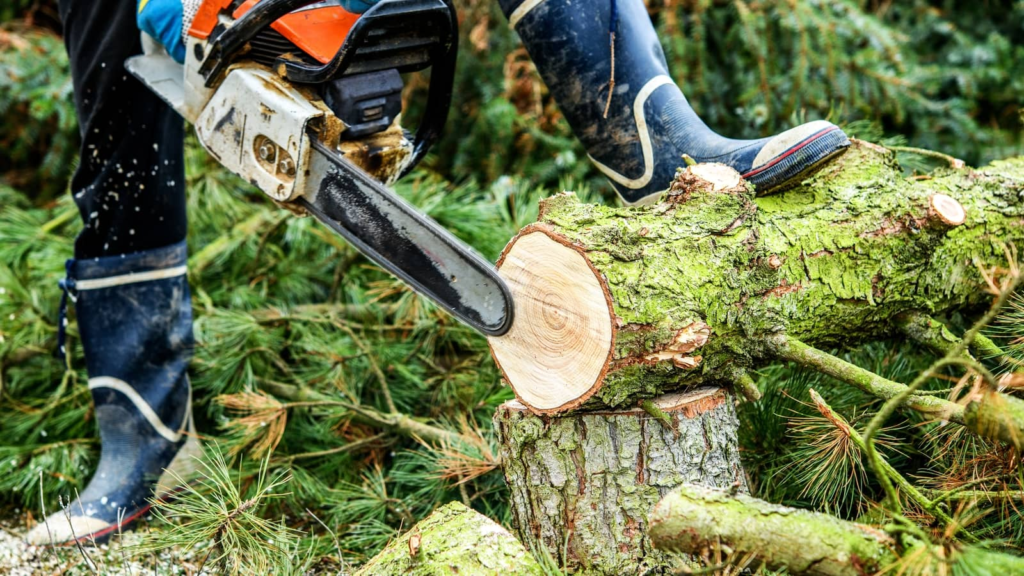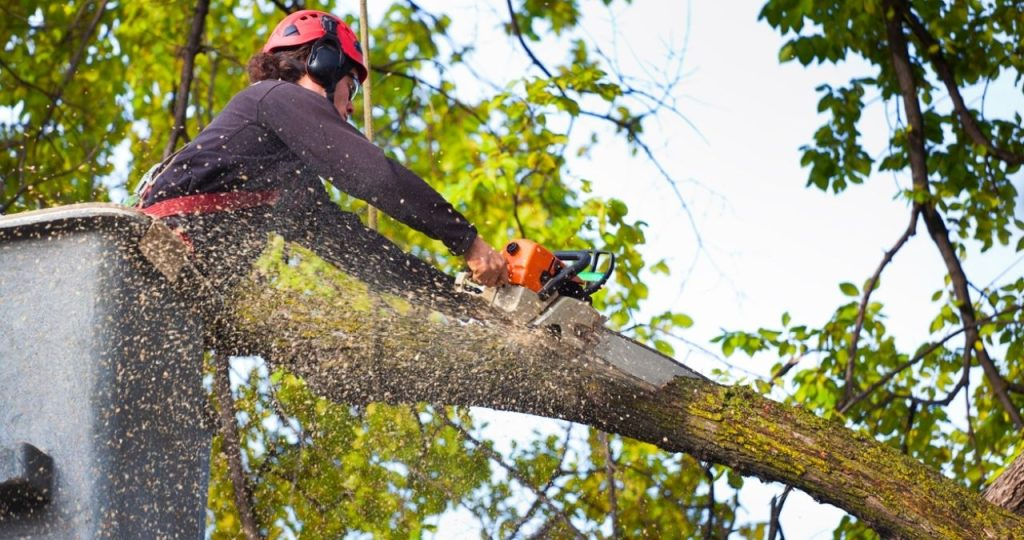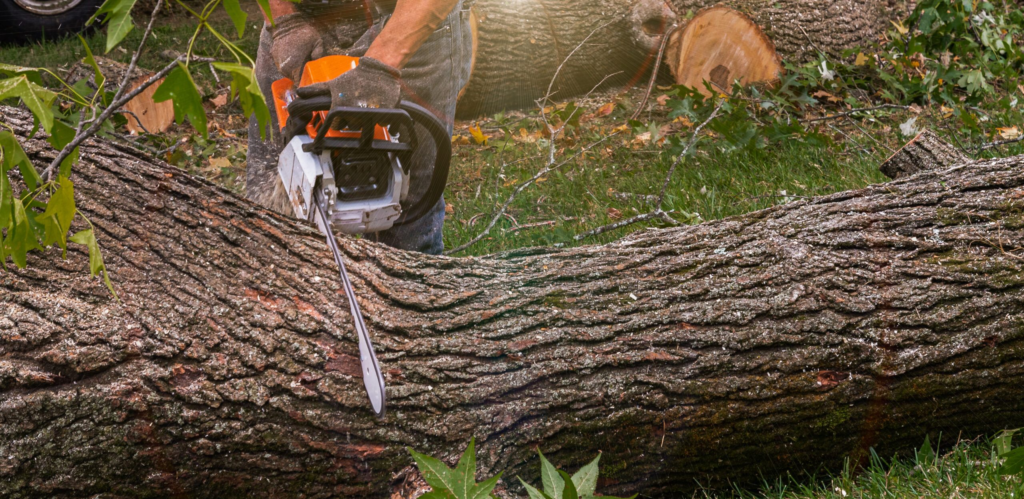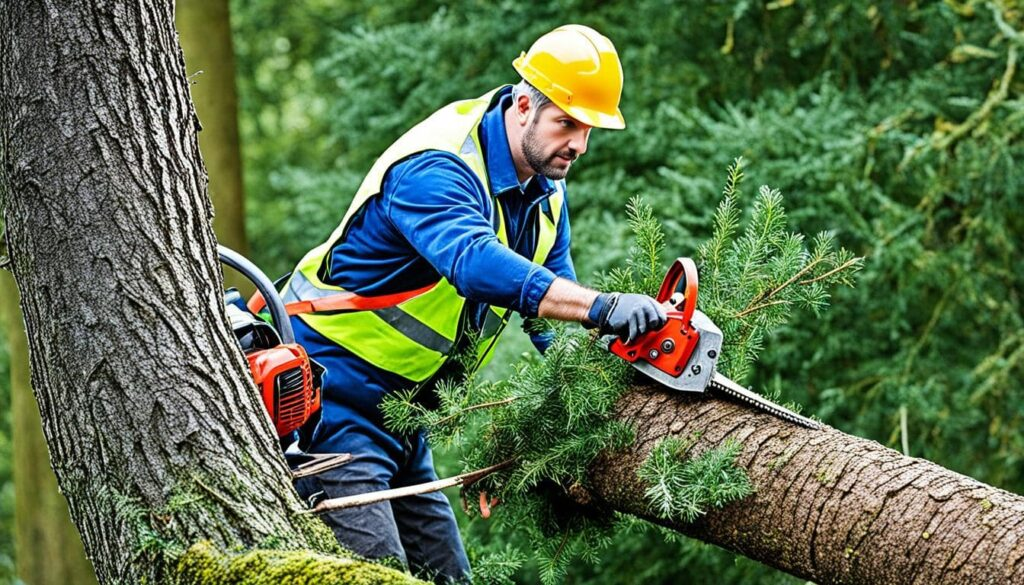Tree Removal Laws in Manchester: A Comprehensive Guide
Are you a Manchester property owner considering removing a tree from your land? Before you reach for the chainsaw or call a tree service, it’s crucial to understand the complex web of regulations governing tree removal in Manchester. This comprehensive guide will walk you through everything you need to know about tree removal laws, permits, protected trees, penalties for violations, and best practices for legally managing the trees on your property.
Understanding Tree Protection Laws in Manchester
Manchester, like many American cities, has established specific ordinances to protect its urban forest. These laws recognize that trees provide substantial environmental, aesthetic, and economic benefits to the community, including improved air quality, reduced stormwater runoff, energy conservation through shading, increased property values, and enhanced quality of life for residents.
The city’s tree protection ordinances aim to maintain these benefits while respecting property owners’ rights. As a property owner, you should be aware that removing trees without proper authorization can result in significant fines and may even require you to plant replacement trees or pay into a tree replacement fund.
The Legal Framework
Manchester’s tree ordinances are part of the city’s broader environmental protection and zoning regulations. These local laws work in conjunction with state and federal regulations that may apply to certain properties, especially those near wetlands, conservation areas, or historic districts.
The primary legal framework governing tree removal in Manchester includes:
- Manchester Tree Protection Ordinance (City Code Chapter 118)
- New Hampshire State RSA 227-J (Timber Harvesting)
- Wetlands Protection Act provisions
- Historic District Commission regulations (for properties in designated historic areas)
- Zoning overlay district requirements
As you navigate these regulations, remember that they were designed to balance environmental protection with property rights. While they may seem restrictive at first glance, they ultimately aim to preserve Manchester’s urban forest for current and future generations.
According to Manchester’s Public Works Department, the city loses approximately 2-3% of its canopy cover annually due to development, disease, and unauthorized removals. The city’s goal is to maintain at least 30% canopy cover, which makes strict enforcement of tree protection ordinances necessary. You can find more information about Manchester’s urban forestry goals on the official City of Manchester Public Works website.
When You Need a Permit for Tree Removal in Manchester
One of the most common questions property owners have is whether they need a permit to remove a tree. In Manchester, the answer depends on several factors, including the tree’s size, species, location, and health condition.

Size and Location Considerations
Generally, you will need a permit to remove trees that meet the following criteria:
- Trees with a diameter at breast height (DBH) of 6 inches or greater on any residential property
- Trees with a DBH of 4 inches or greater in front yards or within 20 feet of public rights-of-way
- Any tree regardless of size located in environmentally sensitive areas, including wetland buffer zones, steep slopes (greater than 15% grade), or designated conservation areas
- Trees in designated historic districts, regardless of size
The city measures DBH at 4.5 feet above ground level on the uphill side of the tree. For multi-stemmed trees, each stem is measured individually, and the measurements are combined to determine if a permit is required.
Health and Hazard Exceptions
You may be exempt from permit requirements in the following situations:
- Emergency removal of hazardous trees that pose an immediate danger to life or property (documentation of the hazard is still required after the fact)
- Removal of diseased trees confirmed by a certified arborist to have a transmissible disease that threatens other trees
- Removal of trees damaged beyond recovery by natural events like storms or lightning (documentation required)
Even for these exceptions, you should document the condition of the tree with photographs before removal and, if possible, get written confirmation from a certified arborist or tree care professional. In emergency situations where a tree poses an immediate hazard, you can perform the removal first and file documentation with the city within 7 days after removal.
Types of Tree Removal Permits in Manchester
Manchester issues several types of tree removal permits, each with different requirements and application processes:
| Permit Type | Application Requirements | Processing Time | Cost | Validity Period |
|---|---|---|---|---|
| Single Tree Removal | Application form, site plan, tree information, reason for removal | 5-10 business days | $50-$75 per tree | 6 months |
| Multiple Tree Removal (3-10 trees) | Application form, detailed site plan, arborist report, tree inventory | 10-15 business days | $150-$300 | 1 year |
| Development-Related Removal | Part of site plan/development application, tree inventory, tree protection plan, replacement plan | 30-45 days | $500+ | Duration of development project |
| Hazardous Tree Emergency | After-the-fact documentation, photographs, professional assessment | 3 business days | $25-$50 | N/A (retrospective) |
To apply for a permit, you’ll need to submit your application to the Manchester Planning and Community Development Department. You can download application forms from the City of Manchester’s Planning Department website.
Protected Trees and Special Considerations
Manchester places additional protection on certain trees due to their ecological, historical, or aesthetic significance. These protections can affect your ability to remove trees, even on your private property.

Heritage and Specimen Trees
Manchester maintains a registry of Heritage Trees, which are trees designated for protection due to their historical significance, exceptional size, rare species, or unique form. If you have a Heritage Tree on your property, you typically cannot remove it without compelling reasons related to public safety or the tree’s terminal health condition.
Specimen trees, which are trees of significant size for their species or exceptional form, also receive additional protection. The removal of specimen trees typically requires mitigation through replacement planting or payment into the city’s tree fund.
Protected Species
Some tree species receive special protection regardless of their size or location. Manchester’s protected species include:
- American Elm (Ulmus americana) – Due to their rarity after Dutch elm disease
- White Oak (Quercus alba) – For their ecological importance and longevity
- Sugar Maple (Acer saccharum) – For their cultural significance to New England
- American Chestnut (Castanea dentata) – Due to their endangered status
- Certain species of pine and other native trees identified in the city’s tree preservation plan
Removing protected species typically requires a specialized permit and may involve significant replacement requirements.
Trees in Environmentally Sensitive Areas
Trees located in or near environmentally sensitive areas are subject to additional regulations. These areas include:
- Wetlands and wetland buffer zones
- Riparian areas along the Merrimack River and other water bodies
- Steep slopes prone to erosion
- Wildlife corridors identified in the city’s conservation plan
- Areas with rare or endangered plant or animal species
If your property contains any of these environmentally sensitive features, you’ll need to consult with both the city’s planning department and potentially state environmental agencies before removing any trees.
The New Hampshire Department of Environmental Services provides guidance on wetlands protection and can be consulted for properties near water bodies or wetlands. Their resources can be found at the NH Department of Environmental Services website.
The Permit Application Process
Navigating the permit application process requires attention to detail and proper documentation. Understanding each step will help you avoid delays and ensure compliance with all requirements.
Step-by-Step Application Guide
- Initial Assessment: Determine if your tree requires a permit for removal based on its size, species, and location.
- Documentation Preparation: Gather the necessary documentation, including:
- Property information (address, tax map, and lot number)
- Tree information (species, size, location, condition)
- Site plan showing the location of the tree(s) to be removed
- Photographs of the tree(s)
- Written explanation of the reason for removal
- Proposed replacement planting plan, if required
- Professional Consultation: For larger projects or protected trees, you may need reports from:
- Certified arborist
- Licensed surveyor
- Environmental consultant
- Application Submission: Submit your completed application with all supporting documentation and the required fee to the Manchester Planning and Community Development Department.
- Site Inspection: A city arborist or planning staff member may conduct a site visit to verify the information in your application.
- Review Process: Your application will be reviewed for compliance with applicable ordinances. Complex cases may require review by the Conservation Commission or Planning Board.
- Decision: You’ll receive a written decision approving or denying your permit application. Approvals may include conditions such as replacement planting requirements.
- Appeals Process: If your application is denied, you have the right to appeal the decision to the Zoning Board of Adjustment within 30 days.
Common Reasons for Permit Denial
Understanding why permits may be denied can help you prepare a stronger application. Common reasons include:
- Insufficient justification for removal of healthy trees
- Incomplete application materials
- Failure to provide adequate replacement plans
- The tree in question is a protected species or designated Heritage Tree
- The tree provides critical environmental benefits that cannot be easily mitigated
- The removal would violate conditions of a previous development approval
Tree Replacement Requirements
Most approved permits include requirements for tree replacement. The standard replacement ratio in Manchester follows this formula:
| Removed Tree DBHReplacement Requirement6-12 inches2 replacement trees (2-inch caliper minimum)12-18 inches3 replacement trees (2-inch caliper minimum)18-24 inches4 replacement trees (2-inch caliper minimum)24-30 inches5 replacement trees (2-inch caliper minimum)30+ inches6 replacement trees (2-inch caliper minimum) plus potential additional mitigation |
|---|
If your property cannot accommodate the required number of replacement trees, you may be permitted to pay into the city’s Tree Fund. The current fee is approximately $350-$500 per required replacement tree, depending on the species and size of the removed tree.

Penalties for Unauthorized Tree Removal
Removing trees without the necessary permits can result in significant penalties. Manchester takes unauthorized tree removal seriously, with enforcement mechanisms designed to deter violations and restore lost tree canopy.
Fine Structure
Penalties for unauthorized tree removal depend on the number of trees removed, their size, species, and location. The basic fine structure is as follows:
- First violation: $500-$1,000 per tree
- Second violation within 24 months: $1,000-$2,500 per tree
- Third or subsequent violation within 36 months: $2,500-$5,000 per tree
For Heritage Trees or protected species, these fines can be doubled. Additionally, the removal of trees in environmentally sensitive areas can trigger state and federal penalties beyond the city’s fines.
Additional Penalties
In addition to monetary fines, unauthorized tree removal may result in:
- Mandatory replacement of removed trees at a ratio of up to 3:1
- Site restoration requirements for damaged understory vegetation
- Installation and maintenance of erosion control measures
- Regular monitoring and reporting to the city for up to 5 years
- Potential criminal charges for severe violations or repeat offenders
Case Study: Enforcement Actions
Recent enforcement actions in Manchester demonstrate the city’s commitment to protecting its urban forest. In 2023, a developer was fined $45,000 for removing 15 mature oak trees without permits during a commercial development project. Beyond the fine, the developer was required to plant 45 replacement trees and establish a conservation easement on a portion of the property.
In another case, a homeowner who removed three protected maple trees was fined $4,500 and required to plant six replacement trees. The city also required the installation of an irrigation system to ensure the survival of the replacement trees.
These cases illustrate that the cost of unauthorized removal far exceeds the cost of obtaining proper permits and following the city’s tree protection ordinances.
Working with Tree Services in Manchester
Hiring a professional tree service can help ensure that your tree removal complies with all applicable regulations. However, not all tree services are equally knowledgeable about local ordinances, so you should choose carefully.
Selecting a Qualified Tree Service
When selecting a tree service in Manchester, look for companies that:
- Are fully licensed and insured
- Employ certified arborists (certification through the International Society of Arboriculture is preferred)
- Can demonstrate knowledge of local tree protection ordinances
- Will handle permit applications as part of their service
- Provide written contracts detailing all aspects of the work
- Have positive reviews and references from past clients
- Are members of professional organizations such as the Tree Care Industry Association
Ask potential tree services about their familiarity with Manchester’s tree ordinances and whether they regularly obtain permits for their clients. Reputable companies will be forthcoming about these requirements and will not suggest ways to circumvent the permitting process.
Questions to Ask Before Hiring
Before hiring a tree service, ask these important questions:
- “Does this tree removal require a permit, and if so, will you obtain it?”
- “How will you protect other trees and vegetation on my property during the removal?”
- “What credentials do your arborists hold?”
- “Can you provide references for similar work in Manchester?”
- “Will you provide a written contract and certificate of insurance?”
- “What is your approach to tree replacement if required by the permit?”
- “How do you handle wood waste and debris from the removal?”
Responsible tree services will be happy to answer these questions and will not pressure you to proceed without proper permits.
Red Flags to Watch For
Be wary of tree services that:
- Offer significantly lower prices than competitors
- Suggest removing trees without proper permits
- Cannot or will not provide proof of insurance
- Pressure you to make an immediate decision
- Do not have certified arborists on staff
- Cannot provide local references
- Do not use proper safety equipment or follow industry standards
Remember that hiring an unqualified service can expose you to liability for property damage, personal injury, and violations of tree protection ordinances. The cost savings from hiring a cheaper, less professional service rarely outweigh these potential risks.
Alternatives to Tree Removal
Before deciding to remove a tree, consider whether there are viable alternatives that might preserve the tree while addressing your concerns.
Tree Preservation Techniques
Modern arboriculture offers many techniques to preserve trees that might otherwise seem like candidates for removal:
- Pruning and Crown Reduction: Selective pruning can reduce hazards from dead or weak branches while maintaining the tree’s health and structure.
- Cabling and Bracing: For trees with structural weaknesses, cables and braces can provide support and reduce the risk of failure.
- Root Zone Improvement: Techniques such as air spading, vertical mulching, and soil amendments can improve soil conditions and help rejuvenate declining trees.
- Pest and Disease Management: Many tree health issues can be effectively treated with proper diagnosis and targeted interventions.
- Lightning Protection Systems: For valuable specimen trees, lightning protection systems can prevent catastrophic damage during storms.
Consulting with a certified arborist can help you determine if these alternatives might be appropriate for your situation. The cost of preservation is often lower than the combined costs of removal, replacement, and permit fees.
When Preservation Isn’t Possible
Some situations do warrant tree removal, including:
- Trees with extensive decay or structural damage that cannot be mitigated
- Trees with severe disease or pest infestations that threaten other trees
- Trees in direct conflict with essential infrastructure or construction
- Trees that have grown too large for their location and pose ongoing risks
- Trees with invasive root systems causing significant property damage
In these cases, proper permitting and replacement planning are still essential. Even when removal is necessary, planning for appropriate replacement trees will help maintain Manchester’s urban forest for the future.
Design Solutions
In some cases, creative design solutions can accommodate existing trees:
- Adjusting building footprints or driveway layouts to preserve significant trees
- Incorporating trees into landscape features such as patios or decks
- Using specialized construction techniques like pier foundations to minimize root damage
- Creating tree protection zones during construction
- Implementing proper tree care before, during, and after construction projects
These approaches often result in more valuable properties, as mature trees significantly enhance real estate values.

Future Trends in Tree Protection Legislation
Manchester, like many cities, is continuously evolving its approach to urban forestry and tree protection. Understanding emerging trends can help you prepare for future requirements.
Climate Resilience Planning
As climate change impacts become more pronounced, Manchester is increasingly viewing its urban forest as critical infrastructure for climate resilience. Future ordinances may:
- Require more extensive replacement of removed trees to increase canopy cover
- Provide incentives for preserving trees that offer significant cooling benefits
- Emphasize native species that are better adapted to changing climate conditions
- Integrate tree protection more closely with stormwater management requirements
- Establish more stringent protection for trees in heat-vulnerable neighborhoods
The city’s climate action plan, available on the Manchester Sustainability Office website, outlines these priorities and their potential implications for property owners.
Enhanced Technology in Enforcement
Manchester is investing in new technologies to monitor and enforce tree protection ordinances:
- Regular aerial and satellite imagery to detect unauthorized removals
- GIS mapping of the urban forest to identify valuable tree resources
- Digital permitting systems that streamline the application process
- Mobile applications for citizens to report potential violations
- Integration of tree inventory data with other city infrastructure planning
These technological advances will likely make both compliance and enforcement more efficient but may also increase the likelihood that violations will be detected.
Community-Based Tree Management
Manchester is moving toward more community involvement in urban forest management through:
- Neighborhood tree steward programs
- Community-based tree planting initiatives
- Educational programs on tree care and preservation
- Public participation in urban forest planning decisions
- Volunteer monitoring programs for tree health and conditions
Property owners can benefit from these programs, which often provide resources, expertise, and sometimes financial assistance for tree care and replacement.
Conclusion: Responsible Tree Management in Manchester
Managing trees on your Manchester property requires understanding and navigating a complex regulatory landscape. By familiarizing yourself with permit requirements, protected tree designations, and the proper procedures for tree removal, you can avoid costly penalties while contributing to the city’s environmental goals.
Remember these key points:
- Always check permit requirements before removing any tree over 6 inches in diameter.
- Be particularly cautious with trees in environmentally sensitive areas or those of protected species.
- Document thoroughly when dealing with hazardous trees that require emergency removal.
- Work with qualified, knowledgeable tree care professionals who understand local regulations.
- Consider preservation alternatives before deciding to remove a tree.
- Plan for proper replacement when removal is necessary.
- Stay informed about changing regulations and community forestry initiatives.
By approaching tree removal thoughtfully and legally, you help maintain Manchester’s valuable urban forest for current and future generations. The city’s tree protection ordinances, while sometimes seeming restrictive, ultimately enhance property values, improve environmental quality, and contribute to Manchester’s reputation as a desirable place to live and work.
For the most current information on tree protection ordinances and permit requirements, contact the Manchester Planning and Community Development Department or visit the City of Manchester website. The city’s urban forestry staff can provide guidance specific to your property and situation, helping you navigate tree care decisions with confidence.




